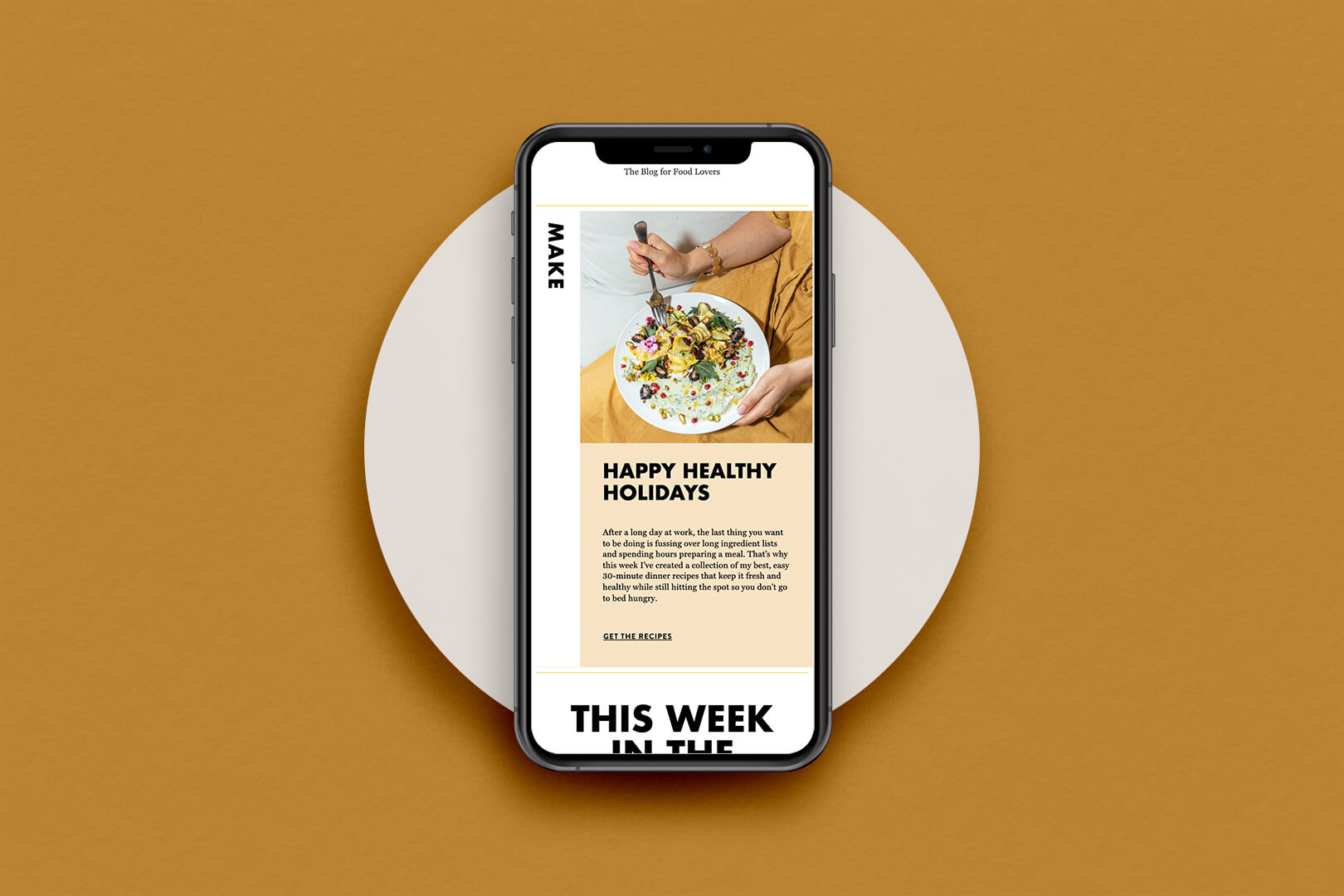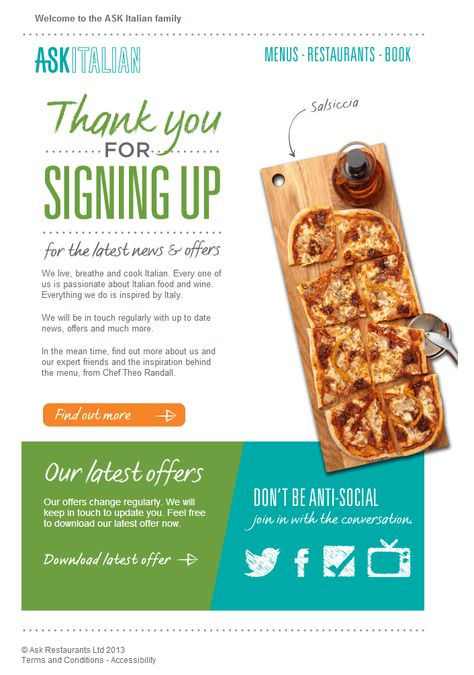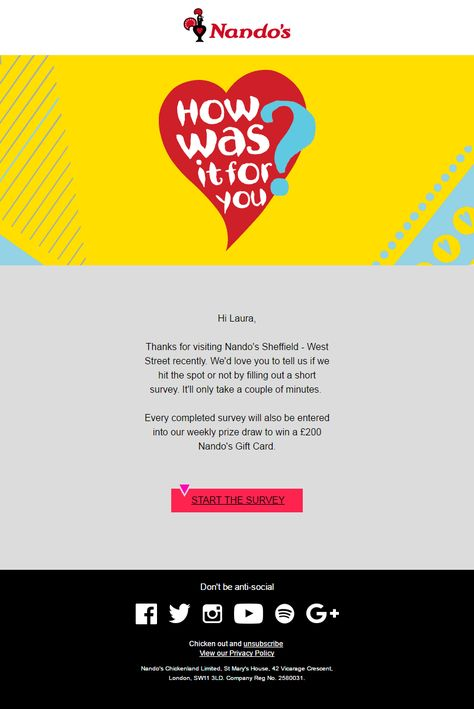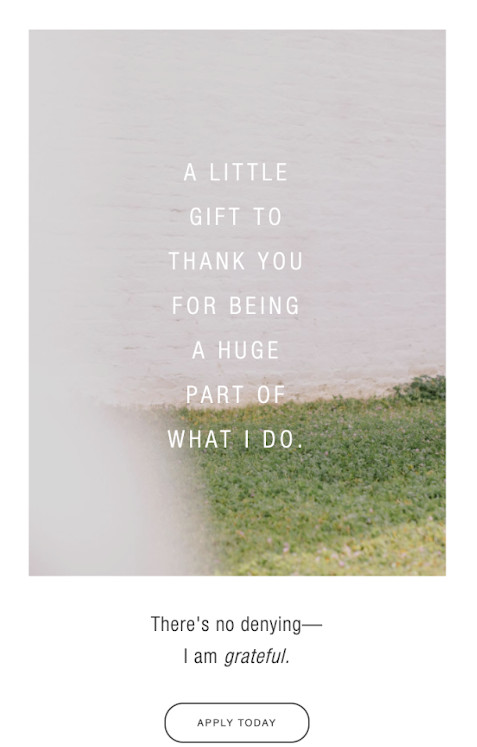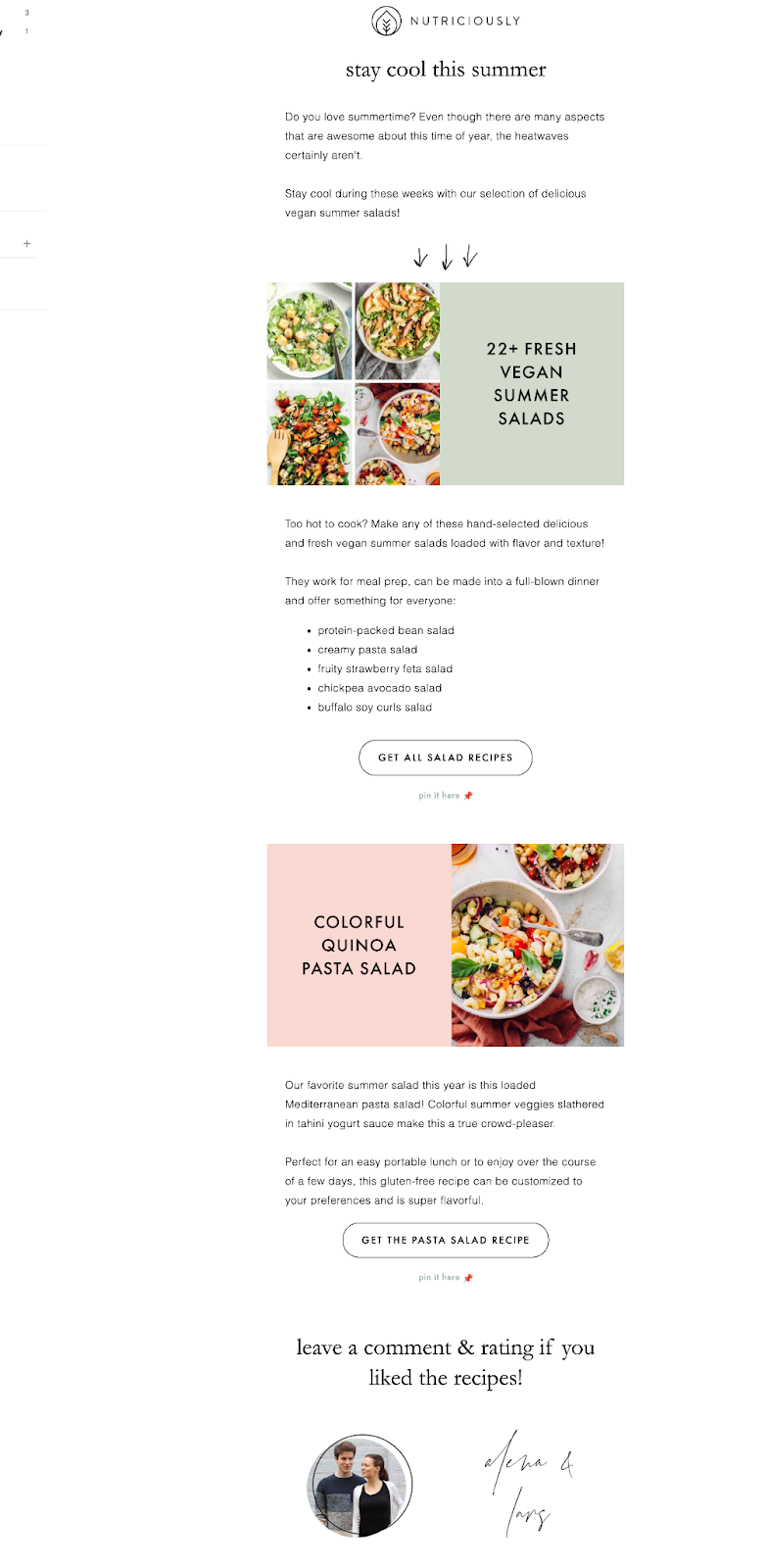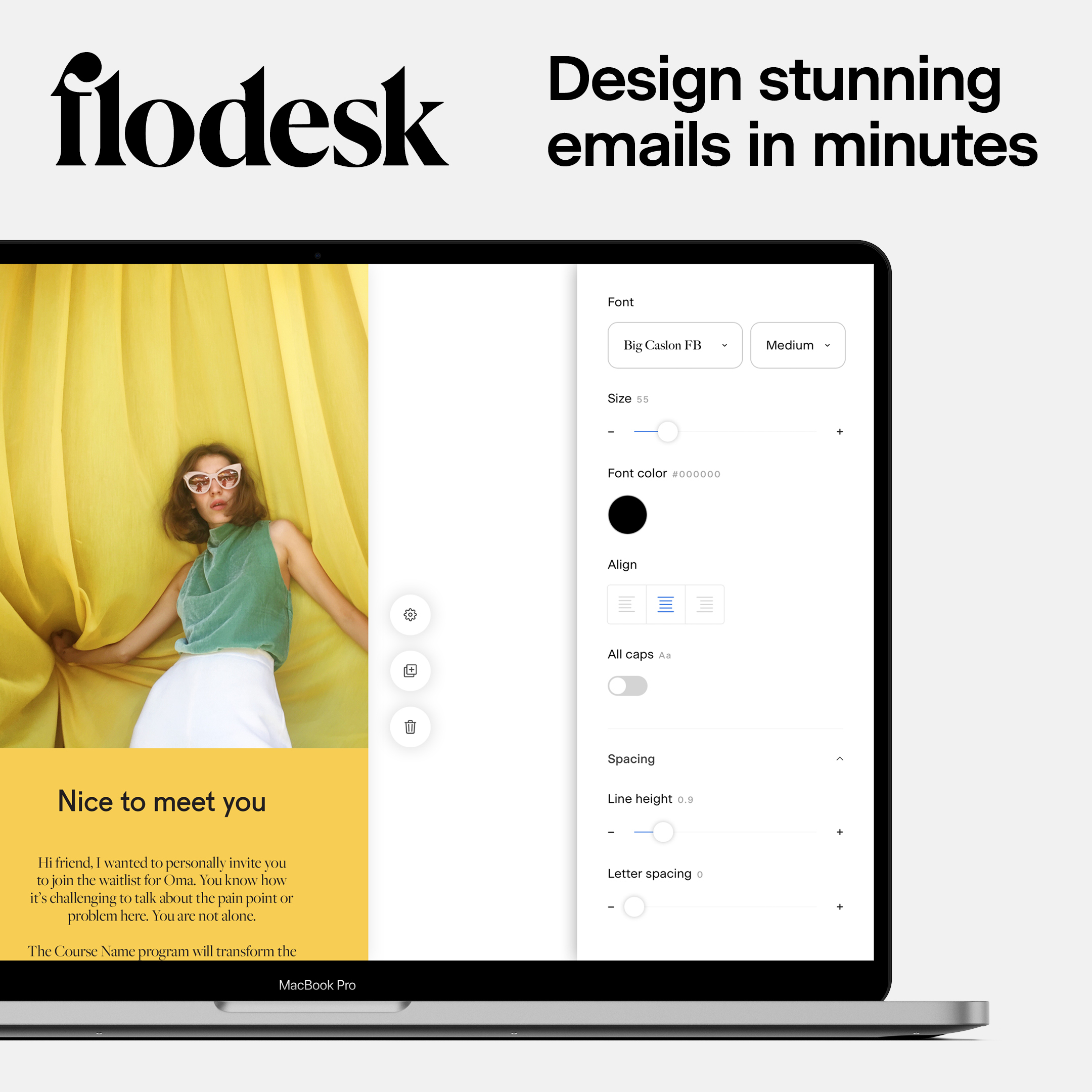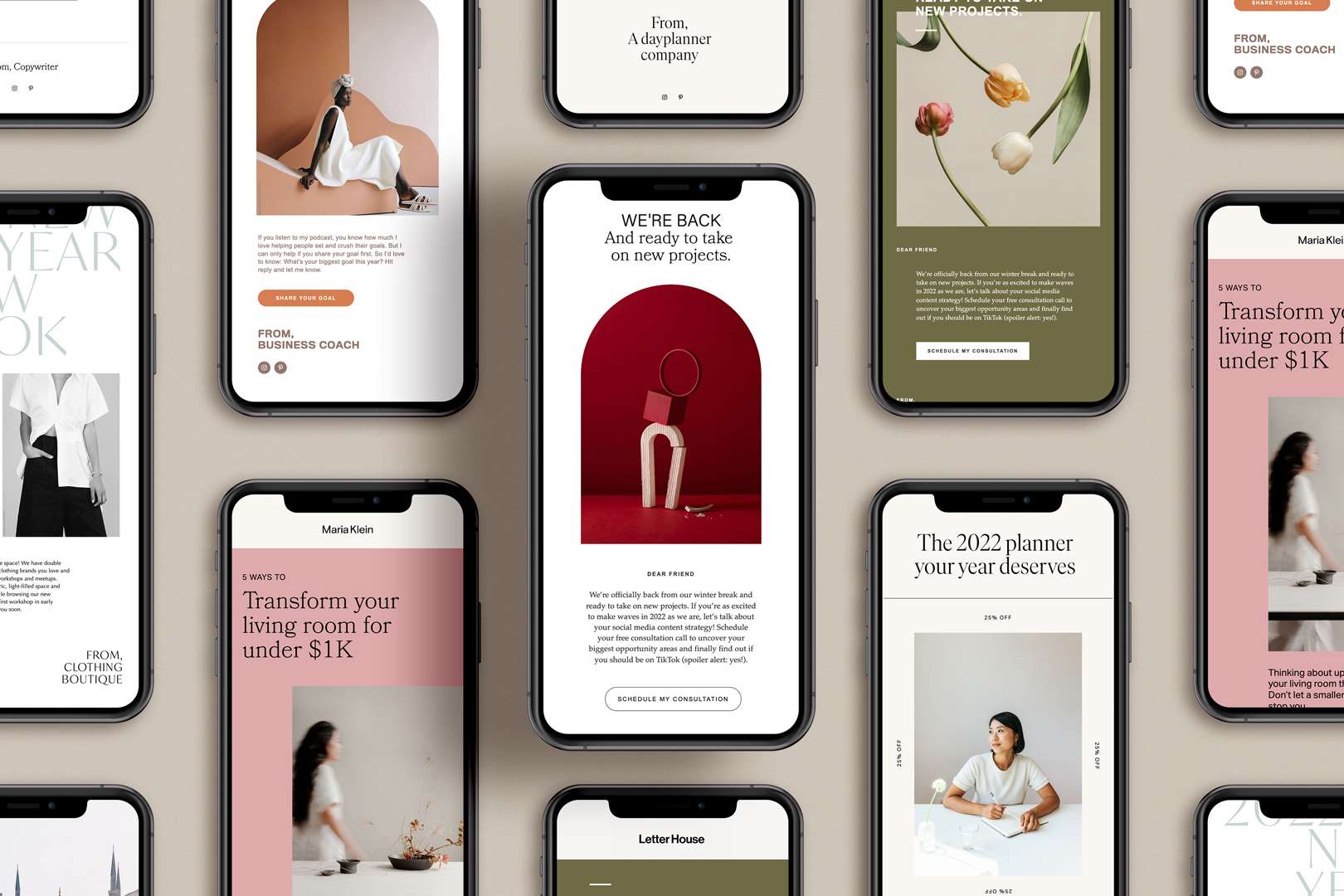How to Write an Appetizing Restaurant Newsletter to Fill Tables
Table of Contents Jump to:
Jump to:
Table of contents
As a restaurateur, you probably expected to be judged more on your entrée than on your online customer engagement. But as a small business owner, sometimes you need to wear more than one hat to maximize your business’ success. We’ll be focusing on the marketing hat in this guide. The marketing hat requires you to think hard about positioning your restaurant favorably against the competition and creating a loyal following of regular customers.
This is where email newsletters come in. To put it simply, they help you engage with potential restaurant guests via emails. They’re affordable, with a significant return on investment of $42 for every $1 spent. Email marketing is also easy to measure, and almost everyone uses email.
In this article, we’ll look at how to get started with restaurant newsletters, including templates for the four essential types you need and our top ideas for potential content.
Get unlimited email sends & subscribers with Flodesk
We’ll never increase pricing because your email list is growing
By now, you’re probably clearer on why restaurant newsletters are so important. So how exactly do you get started putting an email newsletter campaign together? We’ve got six essential tips for you below.
First things first, you’ve got to understand exactly why you’re sharing your newsletters. Email newsletters are an important way to reach your target audience and get them engaged with your business. There are more than a million restaurants in the U.S. right now, with an extra 10,000 being added every year.
So you need to stand out from the competition and keep your business top-of-mind when people are choosing where to eat. Email newsletters help you do just that, helping your restaurant stand out and reach your subscribers regularly, keeping them up to date with what’s new and enticing them with seasonal menus and promotions.
Pick an email marketing tool
It can feel daunting to add email marketing to your already exhausting to-do list. That’s why using an email marketing tool is such a smart move. Platforms like Flodesk make creating beautiful, engaging restaurant newsletters simple with drag-and-drop building block design functionality. And with our intuitive automation features, you can avoid the tedium of manual sends and easily segment your subscriber list to personalize your newsletter content.
Start building your list
To get started with email marketing for SMBs, you need to build your subscriber list. There are several ways you can do that, and here are a few of them:
- Online reservations: Allowing guests to make a reservation online is a simple way to gather their contact information. You just need to make sure you’re transparent about using their data to sign them up to your newsletter list.
- Third-party applications: Using a third-party reservation provider or home delivery service is another way to gather information by using the email addresses people provide when they create an account with the service.
- Directly on your website: You can add a pop-up newsletter signup form on strategic pages on your website to allow visitors to opt-in to your email newsletter.
- In-restaurant promotions: You can use a special offer while guests are dining with you to entice them to share their email addresses. For example, offering them a free drink or discount on their meal for signing up.
Once you’ve built your email list, you’re ready to start sending your restaurant newsletters. But it’s important that your newsletters are relevant to what your customers want and that they meet their expectations.
For example, did you know that 74% of subscribers expect to receive a welcome email as soon as they sign up to an email list? So if you miss that early opportunity to build trust, it may be significantly harder to engage your subscribers in the future. But don’t worry, we’ve got you covered on precisely what types of newsletters to send below. To learn more about writing amazing newsletters, read How to Write a Newsletter (a Really, Really Good One).
Besides welcome emails, other types of emails you’ll need to send include food-related educational content, promotional offers, important announcements, restaurant news they should know and so on.
Know when to send your emails
It might surprise you to know there’s an optimum time to send out your restaurant newsletter. According to research, the best time to send emails to maximize engagement is Tuesday at 10 am. However, it’s important to monitor your own success rate as this may well differ in the restaurant industry.
If you know your customers tend to eat out more at weekends, perhaps send your restaurant newsletter out on a Friday morning to persuade them into an impulse reservation.
Monitor your results
As we mentioned above, it’s crucial to track your results. Some key metrics you should be tracking include:
- Open rates: The percentage of people who open an email after they receive it.
- Click-through rates: The percentage of subscribers who clicked the links within an email.
- Bounce rates: The percent of emails that don’t deliver after you send them.
- Unsubscribe rates: The percent of subscribers who choose to unsubscribe from future mailings.
Here’s another reason investing in an effective email marketing tool makes sense. Many of them have built-in analytics functionality or integrate with third-party platforms that can provide you with all the metrics above and more.
Get unlimited email sends & subscribers with Flodesk
We’ll never increase pricing because your email list is growing
You may well decide to send a weekly or monthly restaurant newsletter to your email list providing a snapshot of “What’s new at [restaurant name].” This is a great way to provide value to your subscribers on a regular basis, but there are also several other occasions when you’ll want to get an email newsletter out to your list.
1. Welcome email
Your welcome email sets the tone for your relationship with subscribers. It’s your first opportunity to show off your restaurant and what makes it unique. In your welcome email, you’ll want to thank subscribers for joining your list and give them a few pointers about what they can expect from your upcoming emails. You might also want to add a discount or promotion to encourage them to come visit you.
For example, here’s how Ask Italian restaurants welcome people to their list. They let people know that they can expect regular communications and what to look out for—news, offers and much more. They talk passionately about their Italian connection and introduce their chef, Theo Randall. They hint at future promotions and offer an immediate discount within this first email. They also encourage subscribers to join their other social media platforms, meaning they can reach people across multiple channels.
2. Promotional email
61% of subscribers prefer receiving a promotional email to any other form of email communication, which isn’t that surprising. After all, most people like free stuff. The promotional email is a great way to encourage potential guests to visit your restaurant for the first time or boost reservations when the restaurant is quieter. That’s why happy hour promotions or mid-week discounts can be so effective.
Offering a 20% discount on its seafood dishes is how Yoot restaurant makes a splash with its subscribers. The promotion amount is large and clear—using a white font really helps it stand out against the background color. Also, the beautiful images and clever use of white space show off the best of their delicious dishes on offer.
To learn more about how to use design elements to improve your subscribers’ reading experience, read How to Design Accessible Emails.
3. Online reviews email
84% of people check out online reviews for local businesses, so customer reviews are important, but they’re even more important for restaurants.
The reason is obvious: new customers want to hear about other people’s experiences with your restaurant before they visit. So you want to use your email newsletters to collect as many reviews as possible from customers. After collecting them, you can place positive testimonials on your website or other available platforms.
So, how do you get those reviews? Here’s where the review email comes in handy; it helps you seek feedback from your subscribers that you can use for social proof. You can send it out ad-hoc, but it works best when you can tie it to a recent visit, for example, by linking it to an online reservation.
Nando’s sends this exact type of email after customers have visited one of their locations. Their review email design is clever since, by tying it to a visit, it shows they care about their customers’ personal opinions. They can also use any information gathered to make positive changes specific to that location. They incentivize a response by offering entry to a weekly prize draw and downplay the level of effort required by sharing that the survey will only take a few minutes.
4. Gratitude email
Sometimes, you just want to take a moment to say thank you to your subscribers for sticking with you through tricky times. The gratitude email allows you to do just that.
Business therapist Ashley Cook Adair does this perfectly with this gratitude email to her subscribers. It shares how grateful she is for their support as she’s built up her coaching business, and she offers a personal invite for loyal subscribers to join her exclusive new course.
In addition to the email types we’ve shared above, you’ll want to deliver some other types of content that keeps your subscribers engaged and updated with what’s new with your restaurant. If you’re struggling to come up with content, see the four extra ideas below:
Seasonal menu items are a great way for your restaurant to stay relevant and keep your menu feeling fresh. They’re also an opportunity to showcase local produce, and seasonal eating is currently a big trend. Effective seasonal menu newsletters, like the one we’re highlighting below, also major on the fact that they’re time-limited, which generates FOMO or “Fear Of Missing Out.” 69% of millennials experience FOMO daily, so you’ll want to tap into that psyche.
2. Main event
Special event invitations are a great way to get email subscribers excited about what your restaurant can offer; you can also tie them into seasonal events or holiday periods, as shown in the newsletter below from corporate events company Food La La.
Whether it’s delivering a cooking class or hosting a local business group, special events can help engage your subscribers, expand your audience and maximize your marketing efforts.
3. Meet the chefs
Sharing information about your head chef or another staff member helps to personalize the experience of visiting your restaurant. It’s easier for people to connect with your services when they can see real people behind the business facade. This is crucial as 76% of people who feel better connected to a brand will buy from them over competitors.
Here’s a snippet from the restaurant newsletter from CHEF. By sharing the names of their two main chefs, they personalize the relationship with their subscribers.
4. Cook up a storm at home
Sharing a well-loved recipe in your email newsletter is a great tactic. It can be a version of a popular restaurant dish or a favorite recipe from one of your team. It feels generous, too—as if you’re passing on the tips of the trade.
Plus, gorgeously shot pictures of food are pretty much guaranteed to make readers hungry, which—if they can’t wait—might just result in them picking up the phone and making a reservation. Take inspiration from plant-based food blog Nutriciously who put together this beautifully-designed newsletter:
This article has given you all you need to know about creating restaurant newsletters, including six essential tips for getting started, the four crucial email newsletters you need and four top strategies for creating engaging content.
For your campaigns to flow smoothly, though, you need a great email marketing platform. In comes Flodesk, the fastest-growing email marketing company. Flodesk makes email marketing beautiful—and truly easy to use. Combining design with simplicity, Flodesk helps small business owners grow their email lists and create emails people love to get.
Flodesk’s curated template gallery and intuitive email builder with drag-and-drop functionality make it easy for members to quickly create and customize their email newsletters. Flodesk’s innovative and proprietary design elements enable members to create custom graphics that align and elevate their brand for maximum engagement and conversion.
Try Flodesk free for 30 days.
